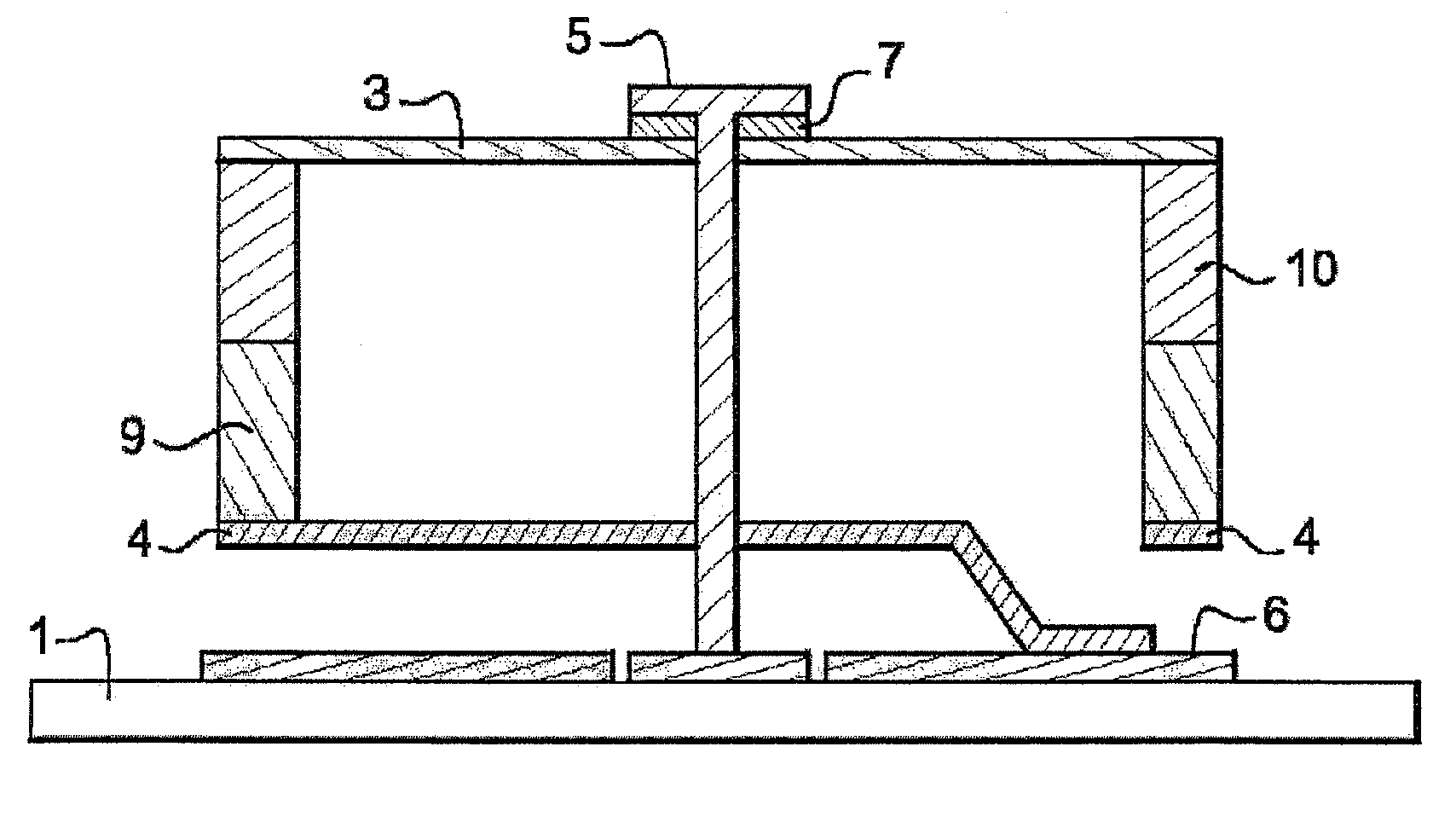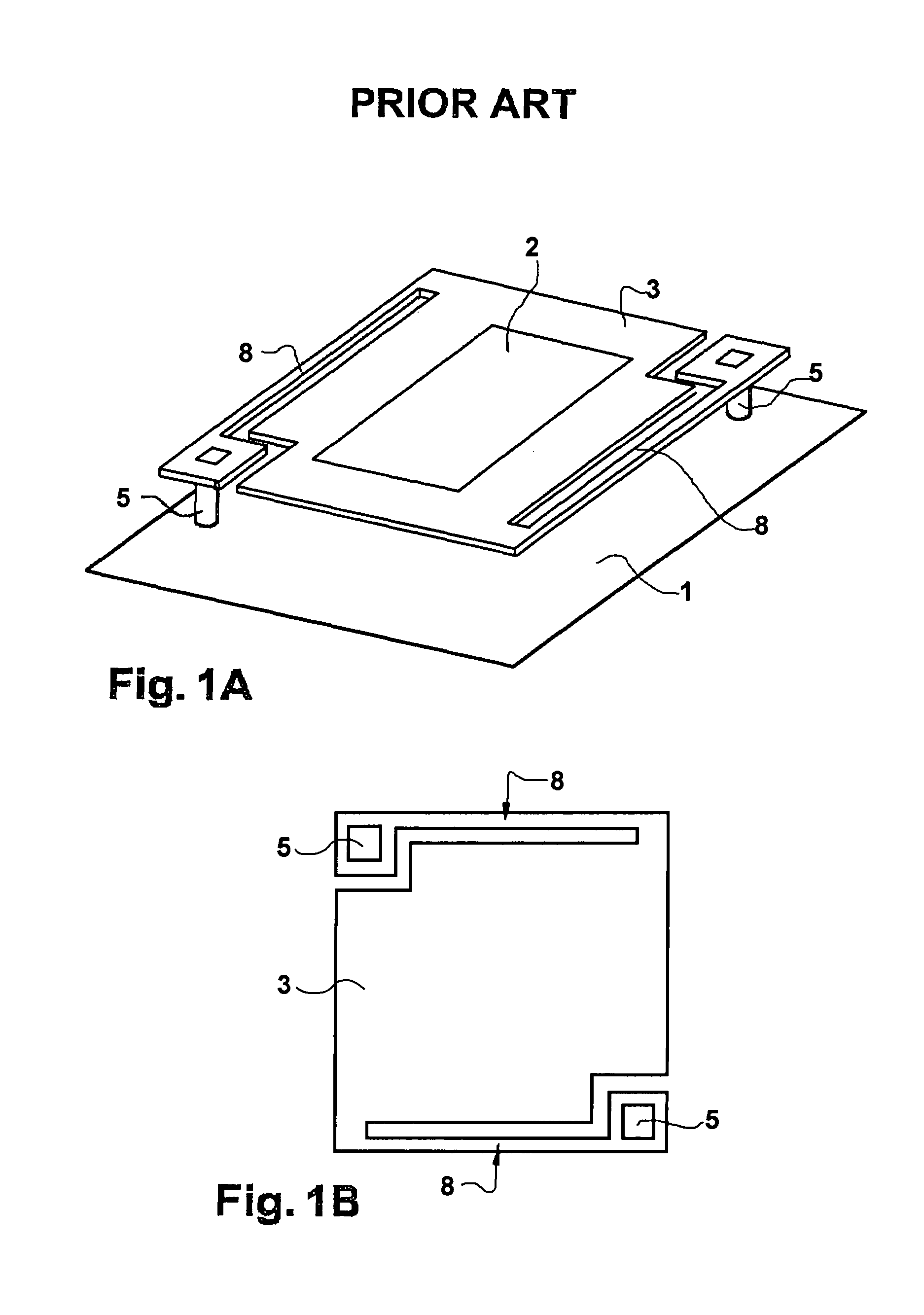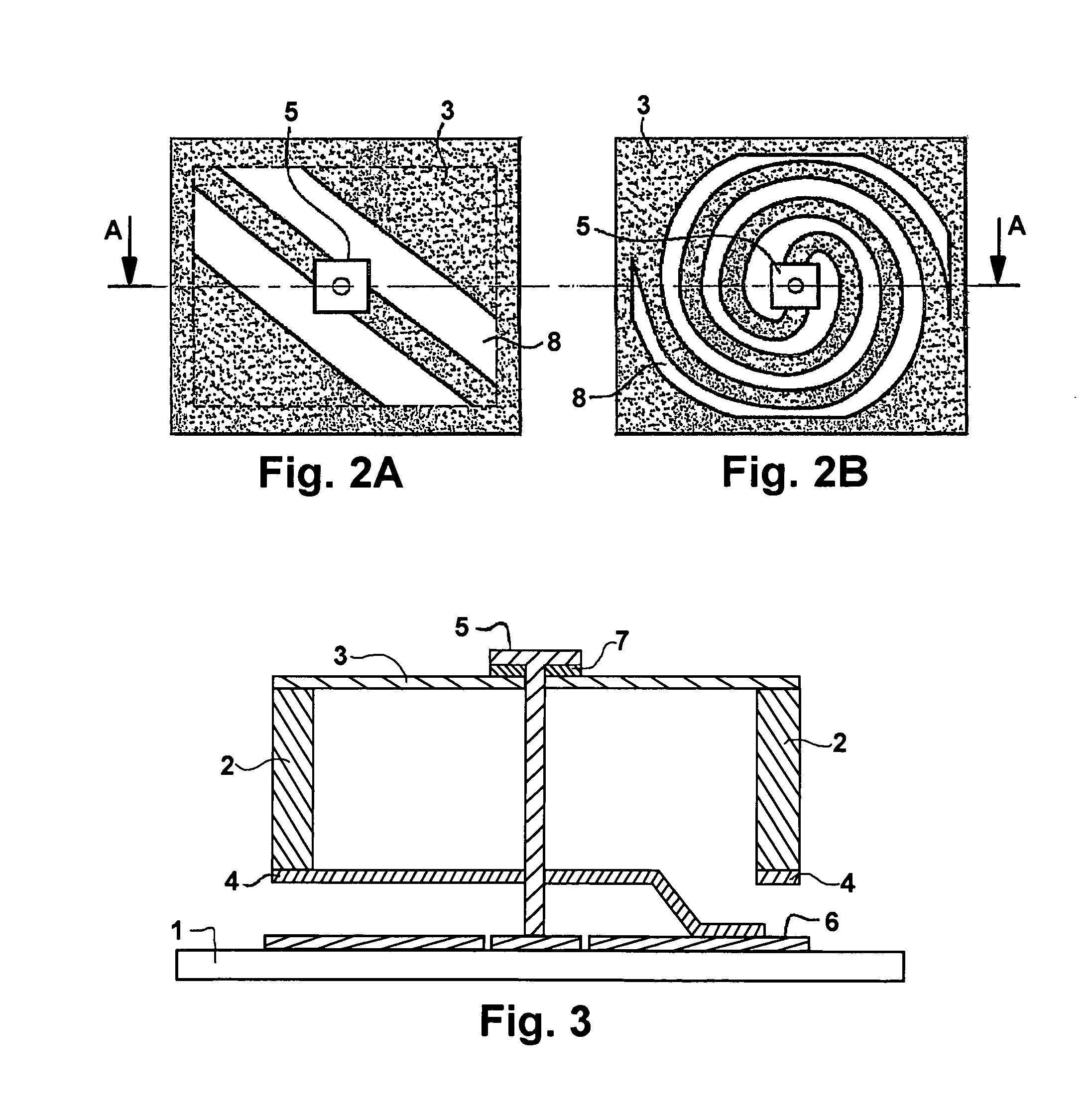Thermal detector for electromagnetic radiation and infrared detection device using such detectors
a detector and electromagnetic radiation technology, applied in the field of thermal detectors, can solve the problems of reducing the width and/or thickness of the arms, affecting the detection effect, and the system of arms has a deleterious effect, so as to prevent the detection of electromagnetic radiation and achieve the effect of thermal coupling with the substra
- Summary
- Abstract
- Description
- Claims
- Application Information
AI Technical Summary
Benefits of technology
Problems solved by technology
Method used
Image
Examples
Embodiment Construction
[0070]The invention therefore relates to an elementary thermal detector and, more especially, the layout of the sensitive material of this detector which is its distinctive feature compared with a bolometer according to the prior art, as shown in FIG. 1.
[0071]An active detector which uses a resistive bolometer according to the invention is described in greater detail, reference being made to FIGS. 2 and 3.
[0072]Such a bolometer is produced on a substrate (1) which incorporates an integrated readout circuit. On this substrate there is a metallic layer (6) which is used both to reflect incident infrared radiation and to electrically connect the bolometer.
[0073]On this metallic layer (6) which is applied using conventional photolithographic methods, a first sacrificial layer of 0.2 μm to 0.5 μm is temporarily used as a support for conductive film (4) (extremely thin in order to limit thermal losses) which, once defined, ensures a lower contact or a lower electrode of the thermometer. A...
PUM
 Login to View More
Login to View More Abstract
Description
Claims
Application Information
 Login to View More
Login to View More - R&D
- Intellectual Property
- Life Sciences
- Materials
- Tech Scout
- Unparalleled Data Quality
- Higher Quality Content
- 60% Fewer Hallucinations
Browse by: Latest US Patents, China's latest patents, Technical Efficacy Thesaurus, Application Domain, Technology Topic, Popular Technical Reports.
© 2025 PatSnap. All rights reserved.Legal|Privacy policy|Modern Slavery Act Transparency Statement|Sitemap|About US| Contact US: help@patsnap.com



